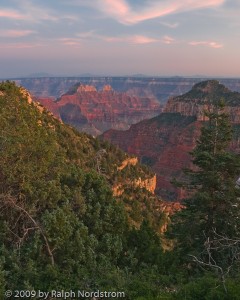
A good friend of mine who conducts workshops tells the story of one of his attendees who showed up with a top-of-the-line camera. He proceeded to set everything on automatic – exposure, focus, white balance, everything. When my friend questioned this, suggesting he at least use aperture priority, the person said that he bought the best camera so that the camera could make all the decisions. He was under the false impression that a great camera would automatically take great pictures. And, apparently he didn’t want to have to think about all that stuff that we think about when we’re out shooting.
In my own workshops I notice that some attendees often lack the basic knowledge of the workings of their cameras. I recall a photographer in the dark passages of Antelope Canyon asking anyone if they knew how to get the camera to take exposures longer than 30 seconds. It’s a little late to be trying to figure that out when it’s so dark you can barely see your camera. Or when I talk to people about exposure compensation or bracketing it’s a bit surprising how often they don’t know how to do that.
A great camera is like a great musical instrument or a great golf club. Having one doesn’t make you a great photographer no more than a great golf club makes you a great golfer. But, just like the right golf club can imporive the game of a competent golfer, a great camera in the hands of an accomplished photographer extends the photographer’s range of expression.
A lot of photographers get carried away with their equipment. They buy the best of this and the best of that. But not always to they get their money’s worth; that is, they don’t use their equipment to the fullest.
That’s why it’s a good idea to include workshops and other training opportunities in your photography budget. A quality camera without the knowledge to use it will not produce the images it is capable of creating. And a workshop is more than being taken to beautiful places. It is an excellent opportunity to learn to exploit the great features built into your camera.
Workshops are also an excellent opportunity to expand and stretch your creativity. With an emphasis on composition, light, personal expression and more, workshops can challenge you to focus on the way you see the world and communicate it to others.
Click here for some workshops to consider.
Click here to see more of my work.
Click here to join me on Facebook.
(723)
Like this:
Like Loading...

